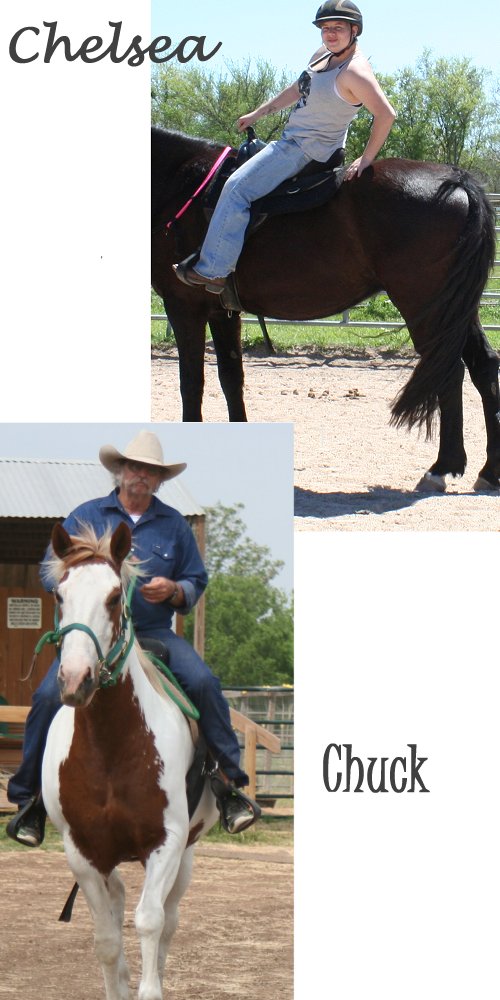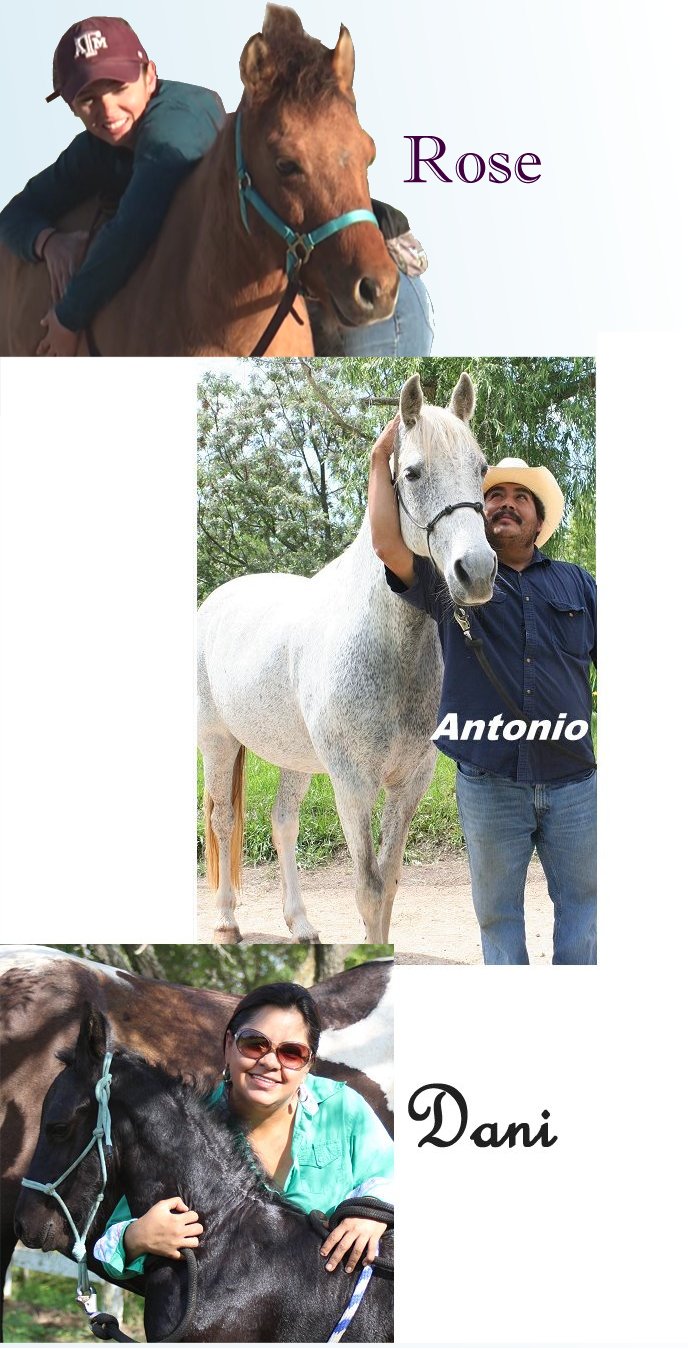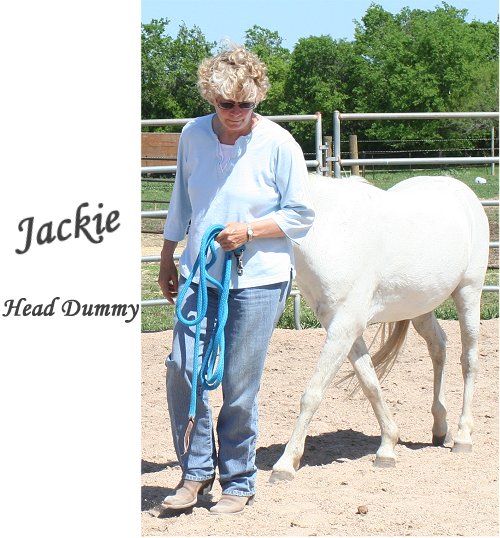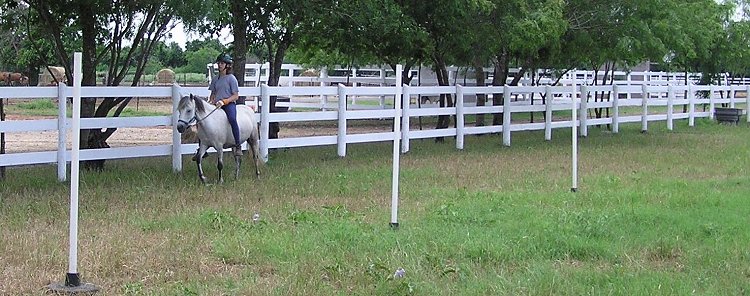So you have a new horse you’d like to train on your own? Or you rescued a horse with some problems? Or you’d just like your horse to be more polite, manageable and trustworthy?
There are dozens (no thousands) of good horse trainers out there, and their work is impressive. They certainly have a place in your agenda. But as easy as they make it look, sometimes it’s nice to see other not-so-perfect trainers go through the process a lot more like you are going through it.
Horse training is the music of psychological and physical pressure orchestrated by timing. It is a waltz or a tango between two synchronized partners. It starts with two un-trained dance partners who must learn to adjust to each other, improve their communication, their timing, their understanding of what each needs to come together smoothly. One leads, one follows. They lift each other to new heights.
This is a compendium of life at the Kristull Ranch in Austin, Tx. It was started to chronicle the journey through the world of horsemanship that is on-going at the ranch. As we learned together, the site has become a sort of Horsemanship for Dummies.

We have each been a training dummy, a crash dummy and just plain “a dummy” at one time or another. It’s been fun. It’s been serious. It is always a challenge. And it is always rewarding.
We are not professionals. We don’t train for other people. And we don’t train for money. If no one sees the site, we will just call it a labor of love. If, on the other hand, someone finds and reads it, we will be gratified.
As you read through the pages, if you get some insight into our training philosophies, methods, and procedures, please feel free to comment or add to our commentary. There is a wonderful world of horse enthusiasts out there. Our lives would be enriched if you cared to add your two cents worth.
Meet the Dummies:



Horse-Pros.com© is a work in progress.
If you have a lot of knowledge and a little bit of time, share your expertise. Comment on what is already written in the various Categories (right) or Suggest a Category & Educate us about it. Grow Horse-Pros.com©
Unless otherwise noted, all content is authored by Jackie “Jax” Nelson.

* Horse Pros© will publish comments or text at the sole discretion of Horse Pros© staff and in a time frame that is practical for our limited personnel.
The opinions presented here are not always the views of our experts or staff. We try to publish a well-rounded view of any topic.
No information will be published that encourages the abuse or mistreatment of any animal.
By commenting here, it is assumed that you have written and have the right to disseminate the material you have submitted. Please do not copy from other published literature.
By submitting to Horse Pros©, you agree to give Horse Pros© the right to publish your text in perpetuity
Under no circumstances should information presented here be construed as veterinary in nature. Always consult your veterinarian if problems persist. Additionally, horse training and equestrian activities in general can be dangerous. While we try to present relevant and valuable content, under no circumstances does horse-pros.com or its members or contributors take any responsibility for the well-being of any horse or person using a method outlined here.

Thank you for creating and compiling these articles and videos! After reading through a few topics, I quickly bookmarked your page and will be returning for more! This is a great resource for a new horse owner (me).
I just found your website and love the information! I have already referred your website to others I ride with. Thank you for providing free and informative articles with excellent information!
I have–most of the time–a very good, respectful, trusting relationship with the horses at Persimmon Creek Stables, all except for one. My relationship with Ash is, frustrating, to exaggerate a little. (I really am quite fond of him.) He is governed by his fear, and though I can catch, ride, and do most things with him, I can always tell his fear of me. He is a rescue horse, so he does have some bad memories, but I have never done anything worthy of him getting fearful. I was wondering if there are any small exercises or activities that would build his trust of me. We no longer have a round pen, so Join-up is not an option. I would like do feel like he is doing things for me out of respect and trust, not out of a trained obligation, and I really would like for his overly watchful eyes to stop showing their whites:) Also, telling him how much I wish he would return my probably spoiling prone affection, at least a little bit, doesn’t work, I tried:)
Any advice would be greatly appreciated!
I will make a quick reply and then come back to it if more thoughts occur to me as I mull it over.
I know it is a financial stretch, but trying to really rehabilitate a rescue horse with no round pen is not wise. You start at a disadvantage because joining is where trust and respect starts. In a perfect world, if he took you as his leader completely, he would be able to relax in your presence, turning over responsibility for safety to you. To take the leadership position takes a lot of consistent work requiring his obedience. You are kind of tying one hand behind my back as I try to give you some guidance.
You don’t tell me much about the horse. What breed of horse is he? An abused Arab or Arab cross is generally a real challenge as they are bred to be vigilant and suspicious. There is no denying the link between personality and breed in most cases. Even an Arab cross that has not been abused frequently takes a lot of work to come down to a totally calm state.
The military teaches men to be obedient no matter what: unthinking obedience – unthinking respect for authority. That type of automatic response is used to get ‘fearless” results under pressure. A horse whose mind is occupied with working for his leader has less time for fearful reactions. He needs a “job” every moment.
He should also not be worked unless he starts in a calm state of mind. When you start your exercises, watch for him to relax before you ask him to do anything. Watch for him to relax before an exercise is finished. Rewarding the relaxed state encourages the relaxed state.
Purchase a Parelli basic training DVD. I don’t generally recommend them because (while I have the utmost respect for the Parellis, I see far too many namby-pamby pet horse owners who choose that method because it sounds “gentle”, but who don’t get the method and just spend years with their carrot stick waving and no real training). But you seem savvy enough to understand. Go through the 7 games.
PS: I would not want to ride until the whites of his eyes disappeared through EVERY ground exercise.
Ok, I will. He is a sixteen year-old Tennessee Walker gelding.
I do a lot of exercises recommended by my riding instructor, like, lateral flexing, backing, and basic yield to pressure kind of thing. (On the poll, getting him to move his rump, etcetera.) My haflinger responded to that sort of ground training very well, and–I think–Ash is beginning to respond better. We will get a round pen soon I think. Thank you for your advice, and if I will keep posting how he does.
Is a horse putting its head on your shoulder, affection, or dominance? I’m pretty sure its affection, but just making sure.
(Congratulations on updating your site! It looks great!)
There is a difference between a horse who is affectionate and rests his head on your shoulder as if you are a partner in the pasture as discussed in Pasture Ettiquette and a pushy horse.
Will he skedaddle out of your space quickly and easily with just a slight signal or is he trespassing your space against your will – dangerously pushing his way in and around you? Likely to push you over or step on your foot.
I let my horses approach slowly and even “lip” me as I rub them and we enjoy mutual touching. But if they get too forceful or insistent I ask them to move away. They don’t seem to be insulted. That’s just the way the world works as far as they are concerned. I am the head mare, and they do as I ask.
I can ask him to move very easily. I supposed it was affection, but when he first did it, I asked him to move, thinking he was being pushy, and he stepped away quickly. He is a very polite boy, the only thing he has trouble with is trying to eat everything he sees when we are riding.:)
Thank you for replying!
That brings up a very interesting “Horse Problem”. If I get a little time, I will write an article about how to handle that. Look for it under the Category “Horse Problems”.
Thanks for reading and participating. Maybe point your friends toward the site. More visitors means more people will find us. We love to hear your thoughts.
My horse, though perfectly fine and quiet while tied or in hand,
is nasty and completely un-catchable when he is free. He is even to wise to be caught with food. He also shows worrying behavior of charging, purposely trying to kick, and running and bucking. Once you do catch him, he’s fine. The issue is catching him, and staying in one piece while doing it. All kinds of internet advise has been offered, none of which has really worked very well. It takes over an hour to catch him, and when I do, I only ride him rarely, to ”break the pattern” as many sights have advised. I only stay where I am and brush and pet him. The amount of time I have been doing this with no results, and the amount it takes to catch him, kind of have me at the end of my rope.
Any advice?
This has been turned into a more in-depth article with more details and pictures: Difficult to Catch Read the full text there.
Thank you so much! This horse (Belin) is, in fact one of the only horses I had not done join up on:) The responsibility of working with him fell to me, after my haflinger finally left to get broken.
He is fairly new to our stables. Anything that has to do with getting out of work will work with Belin. He is so lazy, on the trails winding behind the stables, he will memorize the trail, and always choose the shortest route. The route he knows will wind us home the fastest. He keeps me on my toes with his tricks, but we’re getting there:) Thank you so much for the advice.
I made a couple of alterations to the article about catching to make it a bit more clear. I hope these suggestions work for you. Let us know. And if you find any other technique(s) that make life easier, send them our way too.
From the authors of “A New Perspective”.
We are now conducting clinics at the Fort Worth Stockyards.
You may contact us at gdacuncius@earthlink.net
or sixteenacres.com
Bits are one of the most marketed products around horse riding. There are dozens of bit variations reputed to assist to carry out three very simple exercises with our horses.
1.Turn
2. stop
3. moderate speed and direction.
If the exercises are so simple why do we need a confusing array of bits?
Most weekend warrior riders should stick with the loose ring snaffle bit that has a medium thickness bar.
We need to focus our money and energy into learning the skills of balance, hand control through the use of the reins ( on the bit) and the correct mental state of the rider .
Good coaches will not worry about which bit to use until we are well down the path of being a well accomplished .
One old sage , in answer to my question about which bit should I use commented “Don’t worry about the bit in the horses mouth mate, worry about the bit at the other end”